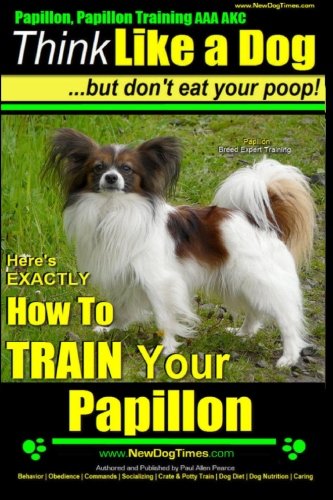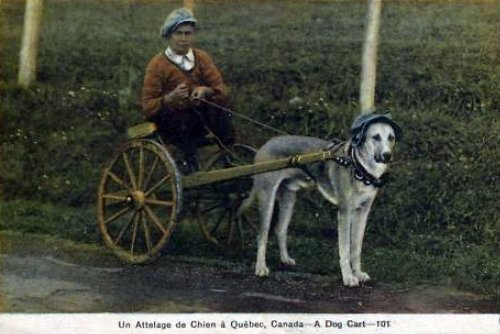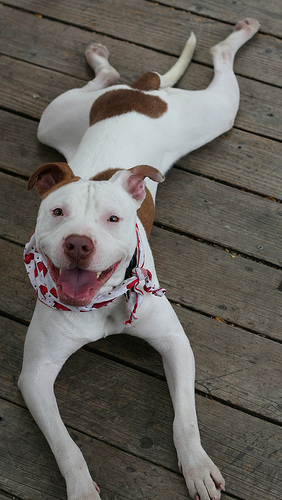Reading pedigrees and understanding the information on them is a very important part of being an owner of a pure bred puppy or dog.
Tracing the lineage of a purebred dog is easy, and you should already have the main tool in your possession - the pedigree. Just think of this tool as your dogs "family tree". If you are a novice dog buyer/owner even after reading the information on the pedigree, it may still mean little to you.
Simply knowing that the purebred puppy "has papers" is enough for many people, but understanding what is on "the papers" oftentimes may be a mystery. Depending on the source, or purchase point, the information on the puppy may be excellent, good or fair - or even worse.
Reading your dogs "family tree" often boils down to the new owners ability to do a bit of research and to ask many questions of the breeder about their new puppy - pointed questions about their particular breed of dog, potential health problems of this breed, training issues, littermates (past and present) questions), etc.
Owning a dog, any dog, pure bred or otherwise can be an exciting, rewarding and, oftentimes, a challenging experience. Whether you own a purebred or mixed-breed dog or puppy, understanding your new puppy and its history is a very important aspect of your relationship.
Having some kind of idea of what types of dogs your mixed-breed is "kin to" will definitely give you some ideas of how and what to expect from the dog in many ways - physicality, temperament, health, etc. The same is true of a pure bred dog and reading pedigrees and the information on them provides even more important information to you, the owner.
Knowing the history of your pedigreed puppy gives you an excellent idea of what you might expect from the dog in the future. Having a better knowledge of the immediate ancestry is of your puppy is even more important and the ability of reading pedigrees does help in over coming any potential problems in understanding the puppies background.
Being able to see the puppies entire litter, their parents and possibly other related dogs is an important step in choosing a purebred puppy. Puppies brought home from a pet store may have a "shady" background at best - and how will you not know whether or not a particular health problem runs in that litter or family of dogs? How it's littermates and parents behave(d)? What can you expect from the dog temperament wise? You have no history to compare the new puppy or dog to.
Not to alarm anyone, but it is always best to buy your pure breed puppy from a reputable breeder AFTER doing research and consulting your veterinarian and other health professionals. You are considering adding a companion and friend to your family for the next 8 - 13 years - this is definitely not a purchase that you want to make on impulse.
Regardless, you now have the new purebred puppy and its pedigree in your possession. How do you go about deciphering that piece of paper? What do all those weird abbreviations mean, and who are all those other names listed on the page?
Reading the genealogy of your new purebred puppy does not have to be so hard. Overall, many items should be self explanatory, still let's take a moment to look at the various things that make up the pedigree of the purebred dog or purebred puppy. Many of the more common abbreviations will be described at the bottom of this web page.
First, the dog's complete registered name and registration number should be evident. Depending on the dog and the breed you may see OFA followed by a number. This simply means x-rays of that particular dogs hips (and sometimes elbows as well) have been examined and evaluated by the staff at the Orthopedic Foundation for Animals (OFA).
An OFA number simply means that that particular dog has been certified having its joints passed by the team of evaluators at the OFA. An OFA number is very good - and the more you see on the "family tree", the better. On an actual German pedigree you might see an "a" stamp in which the dogs hips have been approved for breeding. The European countries have much stricter rules concerning breeding practices than those found in the U.S.
Now, as you take the time to look through all the names, reading your pedigree, take time to investigate more than just the surface information - dig a bit deeper into the abbreviations, the numbers, kennel names, etc. Exactly what do you see?
If you were lucky enough to purchase your purebred from a breeder who truly loves the dogs, you may additionally be able to get copies of photographs of some of the ancestors of your puppy as well as get to hear about some of the traits of several of these past dogs.
Below, for your convenience, we will list several common abbreviations you may see when reading pedigrees - your new puppies pedigree or another, and what they mean. Keep in mind that the information you are reading is truly important - reading pedigrees is more than just reading "papers"- it is the first step in understanding your dog's background, history and lineage, as well as what you may expect of your dog in the future.
This genealogy and the information on it is very important and represents the history of your purebred puppy. Reading pedigrees, and understanding the information on them, is one good place to start. Even more importantly, however, is the love, time and effort you put into your new puppy to form it's upcoming future and the future of the breed overall.
Reading Pedigrees - Commonly Used Abbreviations
GV - Grand Victor
ROM - Register of Merit
CH - Champion
FC - Field Champion
HCH - Herding Champion
HX - Herding Excellent
OTCH - Obedience Trial Champion
TD - Tracking Dog
TDX - Tracking Dog Excellent
UD - Utility Dog
CD - Companion Dog
CDX - Companion Dog Excellent
Sch I - Schutzhund Level One
Sch II - Schutzhund Level Two
Sch III - Schutzhund Level Three
SG - Very Good (German Term)
V - Excellent (German Term)
FH - Advanced Tracking (German Term)
BH - Companion Dog (German Term)
RF - Rescue Dog (German Term).

 Disadvantages And Advantages Of Dog Boarding Solutions Online
When you possess a pet dog, each day could feel like a vaca
Disadvantages And Advantages Of Dog Boarding Solutions Online
When you possess a pet dog, each day could feel like a vaca
 Tips for Choosing a Boarding Kennel
Credit: Morguefile.com
Tips for Choosing a Boarding Kennel
Credit: Morguefile.com
 Great Dog Breeds: the Happy Little Papillon
The first time I was introdu
Great Dog Breeds: the Happy Little Papillon
The first time I was introdu
 20 Jobs Dogs Have Preformed
20 Jobs Dogs Have Preformed
Most people think of th
20 Jobs Dogs Have Preformed
20 Jobs Dogs Have Preformed
Most people think of th
 10 Reasons To Foster A Dog
10 Reasons To Foster A Dog
If you抎 like to make a re
10 Reasons To Foster A Dog
10 Reasons To Foster A Dog
If you抎 like to make a re